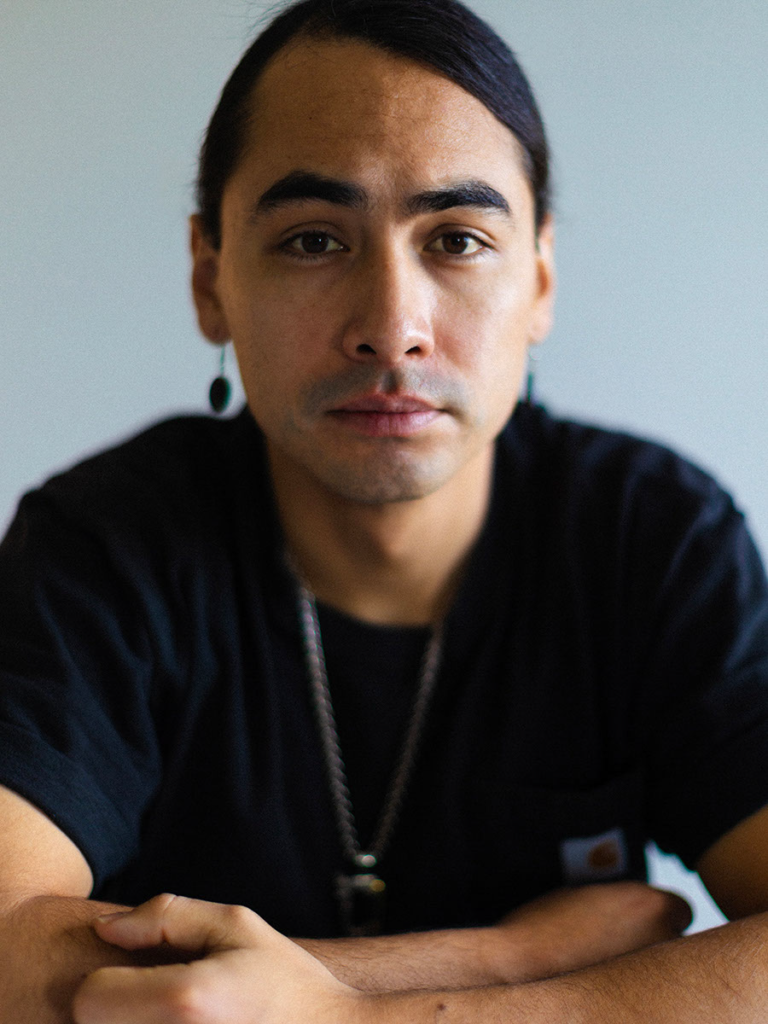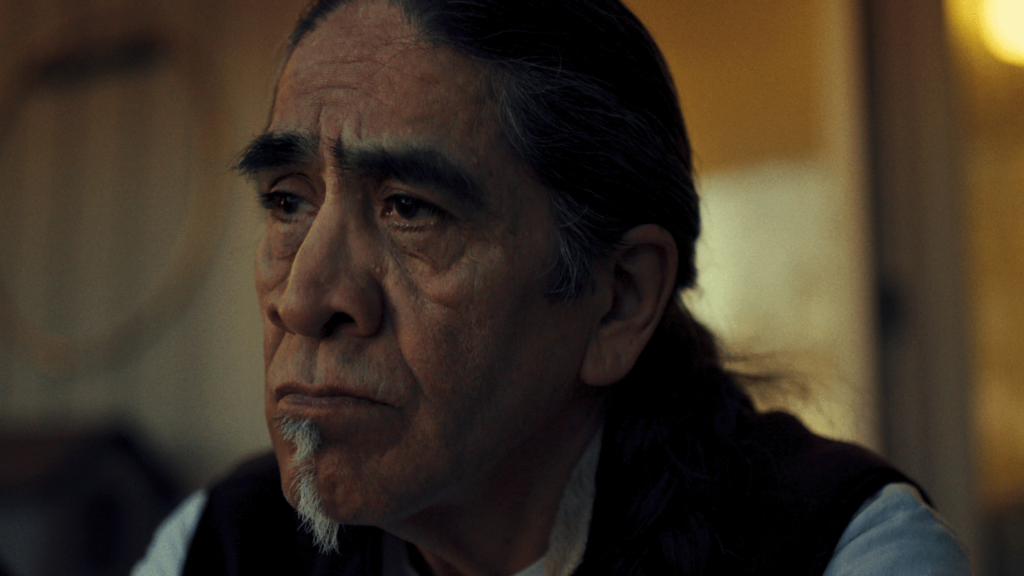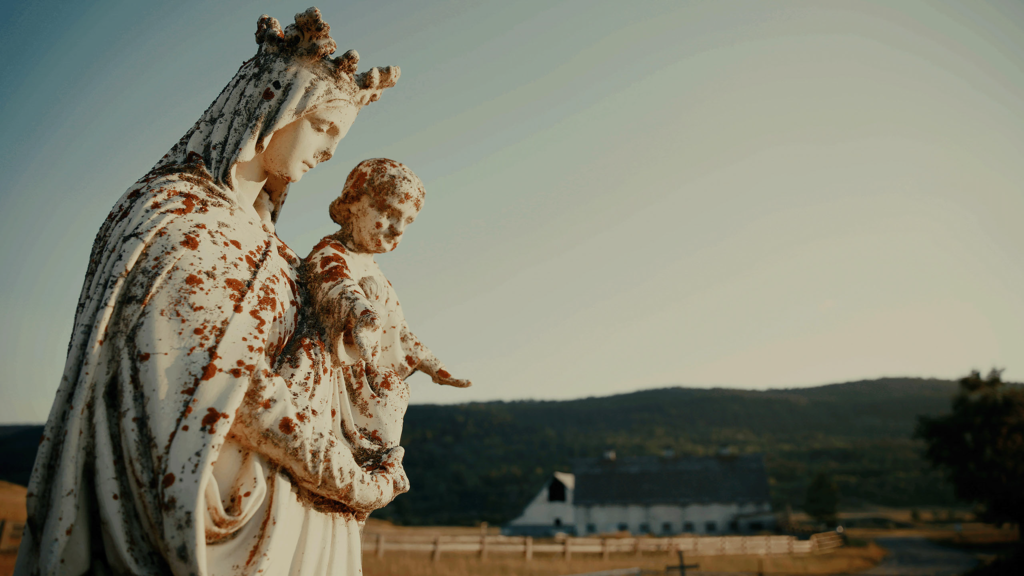In North America, the horrific legacy of federal Indian residential and boarding schools has never been new to Indigenous communities. In the superlative and gripping documentary, Sugarcane, which premiered at the 2024 Sundance Film Festival, we learn just how profoundly ingrained the trauma of that legacy continues to affect every Indigenous person in British Columbia. The film received the Directing Award: U.S. Documentary.
Directed by Julian Brave NoiseCat and Emily Kassie, Sugarcane takes the viewer to the Williams Lake First Nation in British Columbia and the school at the center of the investigation, St. Joseph’s Mission, which was operated by the Roman Catholic Church. The film documents in detail the horrifying sins of sexual and physical abuse, as well as the institutional cover-up of systematic infanticide, as chronicled by eyewitness accounts of babies who were burned to death in the school incinerators or adopted out after being separated from their families.
But, NoiseCat and Kassie also transcend the genre of investigative documentary journalism, by guiding us to an elucidating plane of empathy as part of reconciling with the truth. Among the narrative arcs woven with eminent skill in this documentary is NoiseCat’s own story and that of his father Ed Archie NoiseCat, who was born and was just rescued in time from being abandoned to die. As he discovers the details of what happened to his father after his birth, the younger NoiseCat is committed to finding peace with and for his father.

In an interview with both directors, for The Utah Review, NoiseCat said, “This is a story about a particular history, a particular mission and a particular people. This was a very specific mission that had its own atrocities and it created its own system of infanticide.” He added, “But it is also supposed to be universal to Native people, as well as to all people because all families have their traumas, their pains, the things that go unspoken and are left unsaid. You do not need to be Native, and you don’t need to know this history to be able to relate to that.”
As for how their collaboration occurred and expanded, both talked about the symbiotic and synergistic elements, which culminated in amplifying the film’s most potent attributes of enlightenment, empathy and epiphanies. “The very first day that Emmy [Kassie’s nickname] arrived in Williams Lake, which was about a week before I showed up for this documentary,” NoiseCat explained, “Emmy was taken down one of the steepest, most dangerous trails to the roaring Fraser River where our people still dip net, which is a form of fishing for salmon when they are running at the end of the summer.” Chief Willie Sellars took Kassie, along with others from the community, to test, as NoiseCat explained, “if she could hang.” As expected, she passed the test. NoiseCat added that throughout the production process, they developed a dynamic as closely knit brother and sister.
Kassie said, “We mind melded,” as she explained how her colleague and friend taught her about narrative structure. She already had been working for more than year on the project when she contacted NoiseCat about collaborating on the film. He was working on his manuscript for a narrative nonfiction book titled We Survived the Coyote, which incidentally he is about to submit to the Alfred A. Knopf publishing house. Kassie told him that her investigation had led to the Williams Lake First Nation, the St. Joseph’s mission as well as the Semo and broader group of Salish peoples. NoiseCat informed her that his family had been sent there, where also his father was born and abandoned.

About her colleague, Kassie said, “I also have learned what real bravery looks like as a filmmaker, I’ve worked with people all over the world who are extraordinarily courageous to share their stories but never have I seen someone also take on the role as an artist and interrogate themselves in their own history, their own story and their own voice. And, make art from it, to be a witness, and to be a part of it was really extraordinary. It inspired me, as I look to what I do next, to start to tackle some of those things within myself.”
Indeed, Sugarcane’s innate artistic provenance is what distinguishes this investigative documentary film from so many of its counterparts. “Our approach to it had to be from that very close, hopeful and poetic perspective, as opposed to just a journalistic one,” Kassie added.
One of the film’s most important scenes for its critical multidimensionality comes when Rick Gilbert (who later passed away before the film was completed) traveled from Williams Lake to the Vatican, in anticipation that Pope Francis would not only acknowledge, but also go the full path to apologize, accept responsibility on behalf of the church and to commit the institution to sincere and constructive reconciliation.

At the time of the trip to Roma, Canadian Prime Minister Justin Trudeau announced that he was traveling to Williams Lake to issue an apology on behalf of the government. In examining archival documents and police records, Kassie already had discovered that not only the church but that various governmental institutions including the Royal Canadian Mounted Police, Department of Indian Affairs and other governmental departments, at the minimum, were aware of these allegations but also likely complicit in a systematic coverup to suppress the truth of these allegations from ever being revealed.
NoiseCat and Kassie went to Rome and Christopher LaMarca, director of photography, stayed with Trudeau and Chief Willie Sellars. “We really wanted both of those moments featuring the head of the church and the head of the nation,” Kassie added. Indeed, the scene, especially in the Vatican, makes clear just how disappointed and empty Gilbert felt. Kassie explained that she shot the scene as if it were a nightmare. Gilbert left the scene after the Pope’s brief formulaic statement and walked through the Vatican Museum, where he stayed in clear focus but the images of Catholic iconography are intentionally blurred. Likewise, when he was gazing up in the Sistine Chapel, the same visual effects were achieved.
“The Vatican trip was a real opportunity for us to interrogate the imperial metropol and institution that deceived the land and the people,” NoiseCat explained. “We thought very intentionally about how we wanted to portray that, both when we were on the ground and then in the edit.” The scene reminds the viewer that it was, as NoiseCat said, “built upon theft and expropriation and the last image that you see in that sequence is the only symbolic representation (there are some audio ones elsewhere in the film) of the trickster coyote — the Salish trickster who helped Creator make the world. He did so through both great acts of creation but also some failures and acts of trickery and cleverness.”
He added, “That is a gesture towards the narrative tradition that underlies a lot of our thinking throughout the film, as well as a gesture toward the process which demanded to film in a place like the Vatican where bringing a camera is not exactly endorsed by the church.”

Both directors also credited the exhausting process of editing for making the final cut which seamlessly weaves the multi-character elements, thanks to the efforts of Nathan Punwar and Maya Daisy Hawke, who also worked on editing the Academy-Award-winning documentary Navalny (2022).
NoiseCat added that the film should prime the discussion not only in Canada, but also in the U.S. In 2022, the U.S. Department of Interior (led by Deb Haaland, the first Native American to hold a Cabinet Secretary post) issued its first phase report, which indicated that from 1819 to 1969, the federal Indian boarding school system comprised 408 federal schools across 37 states or then territories, including 21 schools in Alaska and 7 schools in Hawaii. Haaland said in a statement, “We continue to see the evidence of this attempt to forcibly assimilate Indigenous people in the disparities that communities face. It is my priority to not only give voice to the survivors and descendants of federal Indian boarding school policies, but also to address the lasting legacies of these policies so Indigenous peoples can continue to grow and heal.”
Incidentally, the film was among the four documentaries presented at this year’s festival by Impact Partner Films. Geralyn Dreyfous, one of the founders of Impact Partners and cofounder of the Utah Film Center, is executive producer.
For information about remaining events and tickets, see the Sundance Film Festival website.
